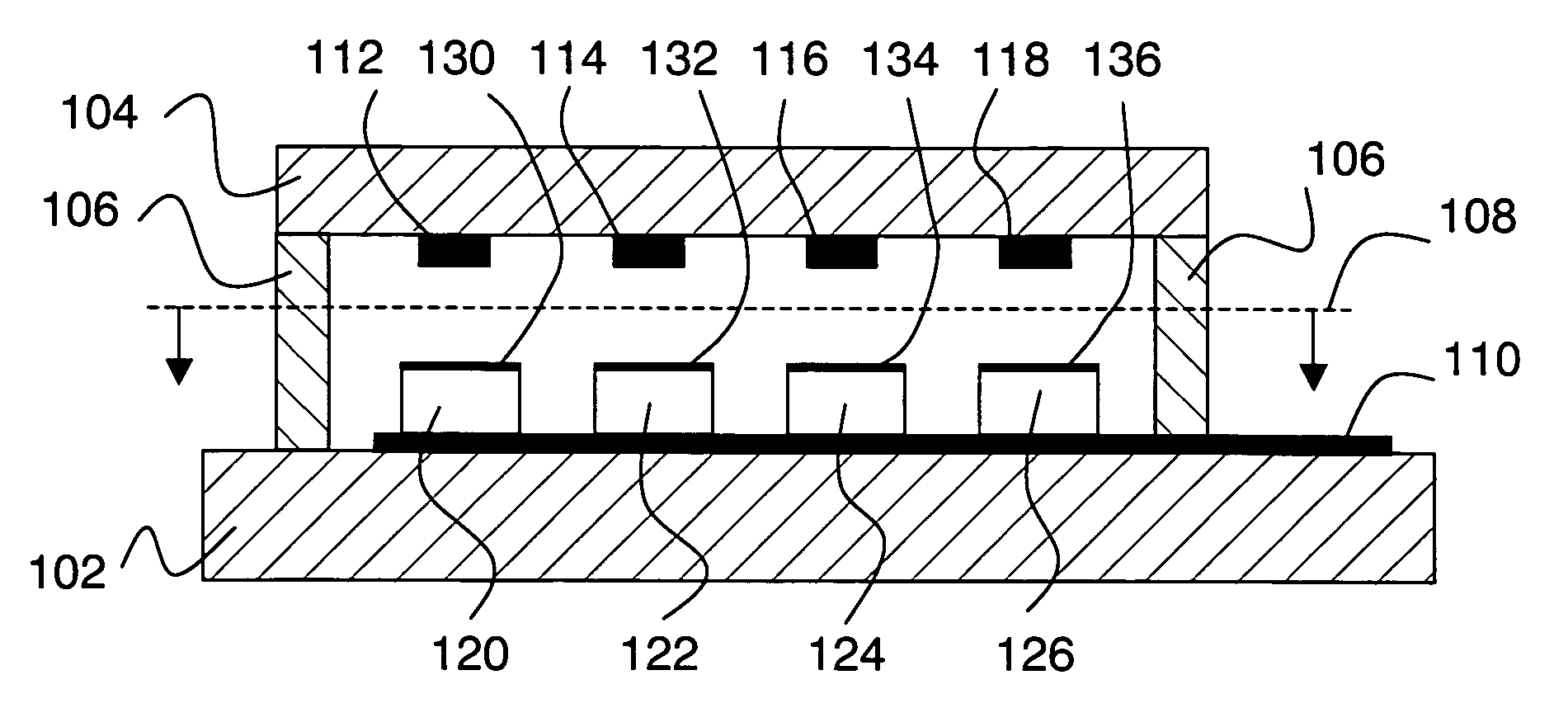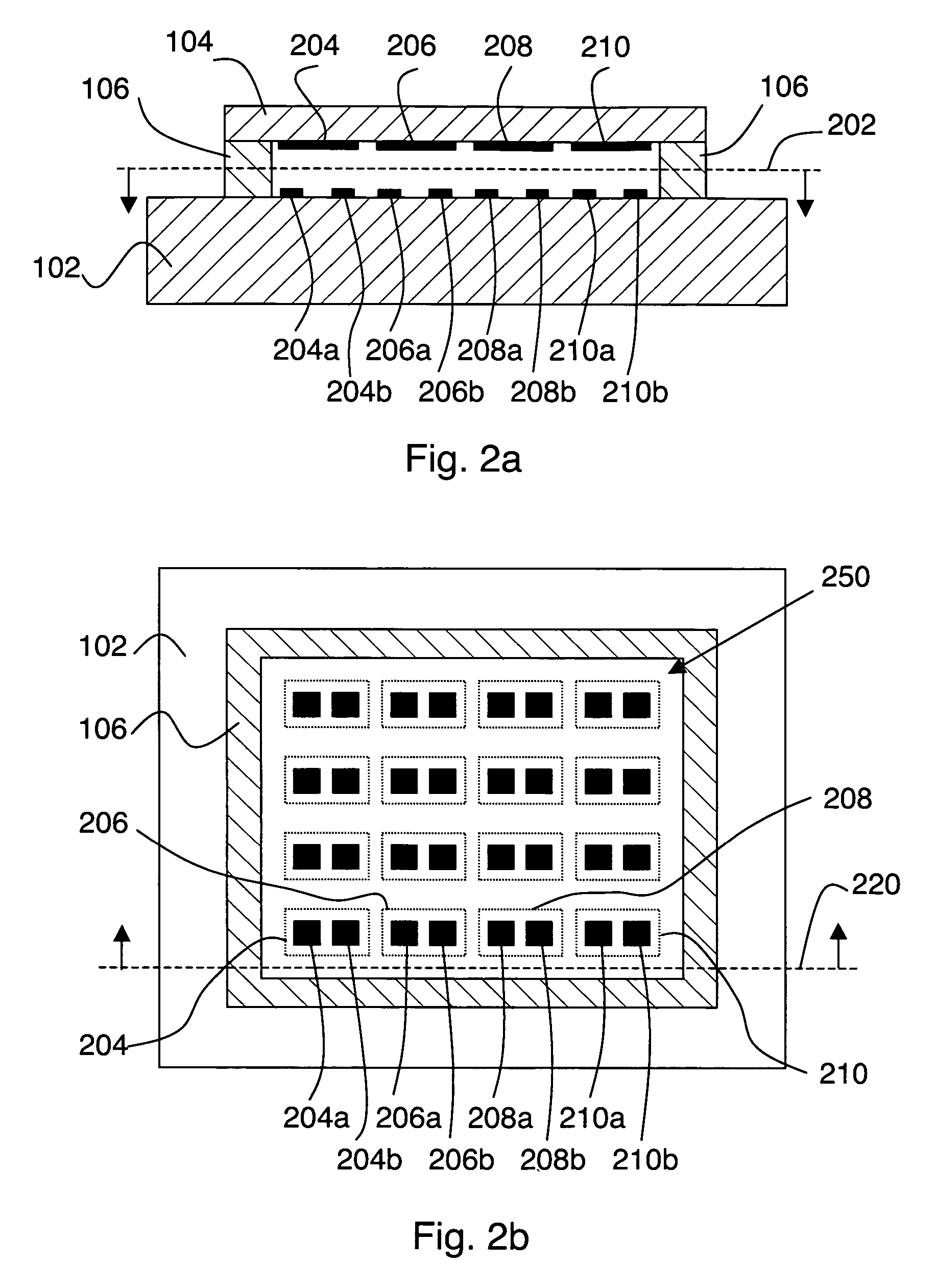Flexible imaging pressure sensor
- Summary
- Abstract
- Description
- Claims
- Application Information
AI Technical Summary
Benefits of technology
Problems solved by technology
Method used
Image
Examples
Embodiment Construction
[0017]FIGS. 1a-b show cutaway side and top views, respectively, of an embodiment of the invention. More specifically, FIG. 1a shows a cutaway view along line 140 on FIG. 1b, and FIG. 1b shows a cutaway view along line 108 on FIG. 1a. A flexible substrate 102 and a flexible membrane 104 are connected to a spacer 106. Membrane 104 is conformable to a textured surface to be sensed (e.g., a fingerprint). A plurality of pressure sensor elements 150 is included, each pressure sensor element being responsive to a separation between part of the membrane and a corresponding part of the substrate. Spacer 106 determines, in part, a nominal separation between membrane 104 and substrate 102 for each pressure sensor element. Here the nominal separation is the separation between membrane and substrate when no textured surface is making contact with the top surface of membrane 104. As used herein, “flexible” is taken to refer to materials or structures having a Young's modulus of less than 25 GPa. ...
PUM
 Login to View More
Login to View More Abstract
Description
Claims
Application Information
 Login to View More
Login to View More - Generate Ideas
- Intellectual Property
- Life Sciences
- Materials
- Tech Scout
- Unparalleled Data Quality
- Higher Quality Content
- 60% Fewer Hallucinations
Browse by: Latest US Patents, China's latest patents, Technical Efficacy Thesaurus, Application Domain, Technology Topic, Popular Technical Reports.
© 2025 PatSnap. All rights reserved.Legal|Privacy policy|Modern Slavery Act Transparency Statement|Sitemap|About US| Contact US: help@patsnap.com



